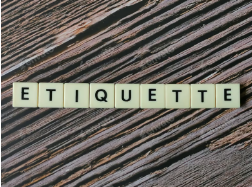Understanding email etiquette is important for effective communication in both personal and professional settings. Here are some key guidelines to follow:
- Use a Professional Email Address:
- Choose an email address that reflects your name or your organization. Avoid using nicknames or unprofessional handles.
- Create a Clear Subject Line:
- Write a concise and relevant subject line that summarizes the email’s content. This helps the recipient prioritize and understand the message quickly.
- Greet the Recipient Appropriately:
- Use a polite greeting, such as “Dear [Name],” for formal emails. For less formal communication, “Hi [Name],” or “Hello [Name],” is acceptable.
- Be Concise and Clear:
- Keep your message brief and to the point. Use short paragraphs and bullet points to improve readability. Avoid rambling.
- Use Proper Language and Tone:
- Maintain a polite and professional tone. Avoid slang, overly casual language, or excessive punctuation. Adjust your tone based on your relationship with the recipient.
- Proofread Before Sending:
- Review your email for spelling, grammar, and punctuation errors. A well-written email reflects professionalism.
- Respond Promptly:
- Aim to reply to emails within 24 to 48 hours, even if it’s just to acknowledge receipt and indicate when you will provide a full response.
- Be Careful with Attachments:
- Only send attachments when necessary and ensure they are relevant. Mention the attachment in your email and check file sizes (large files might not be received).
- Respect Privacy and Confidentiality:
- Avoid sharing sensitive information without permission and ensure you have the right to share any content with the recipient.
- Use a Professional Closing:
- End your email with a courteous closing, such as “Sincerely,” “Best regards,” or “Thank you,” followed by your name and any relevant contact information.
- Consider the Audience:
- Tailor your message according to the recipient’s level of formality. Corporate communication may require more formality than messages to peers.
- Avoid Overuse of CC and BCC:
- Use the CC (carbon copy) field to include others who should be in the loop but avoid overloading recipients with unnecessary emails. Use BCC (blind carbon copy) for mass emails to respect privacy.
By following these email etiquette guidelines, you can ensure clear and respectful communication, which can foster positive relationships and enhance your professional image.
